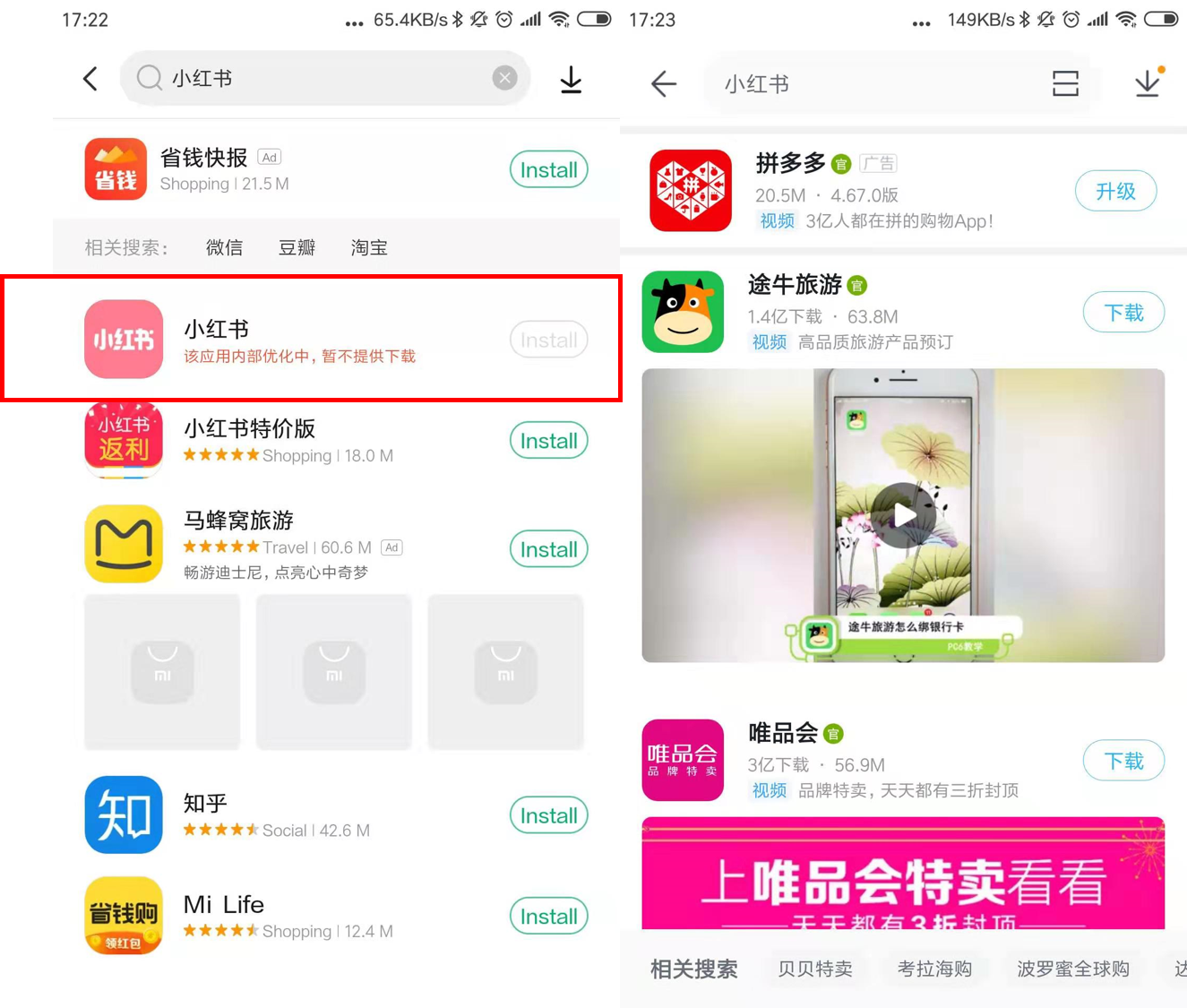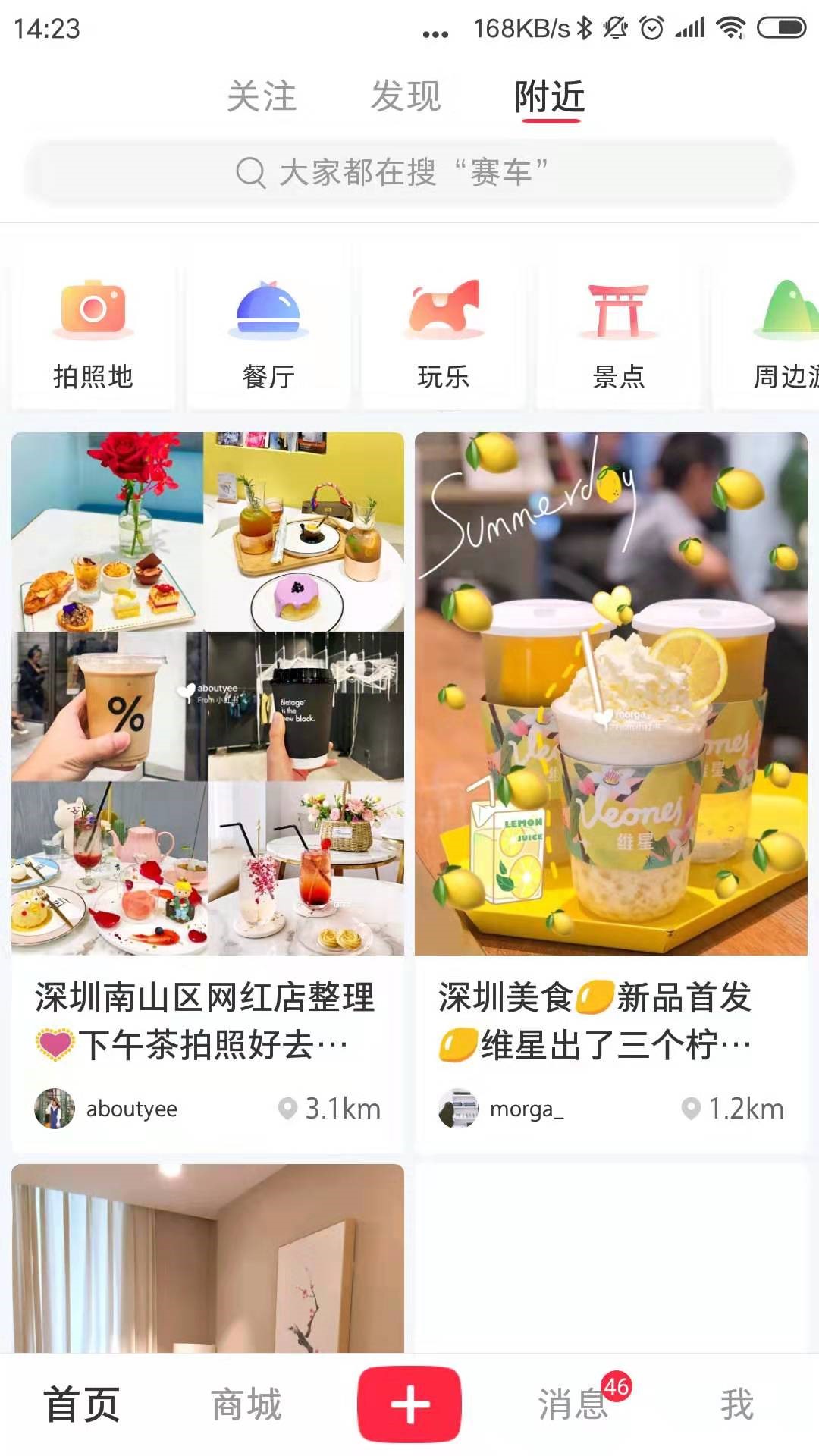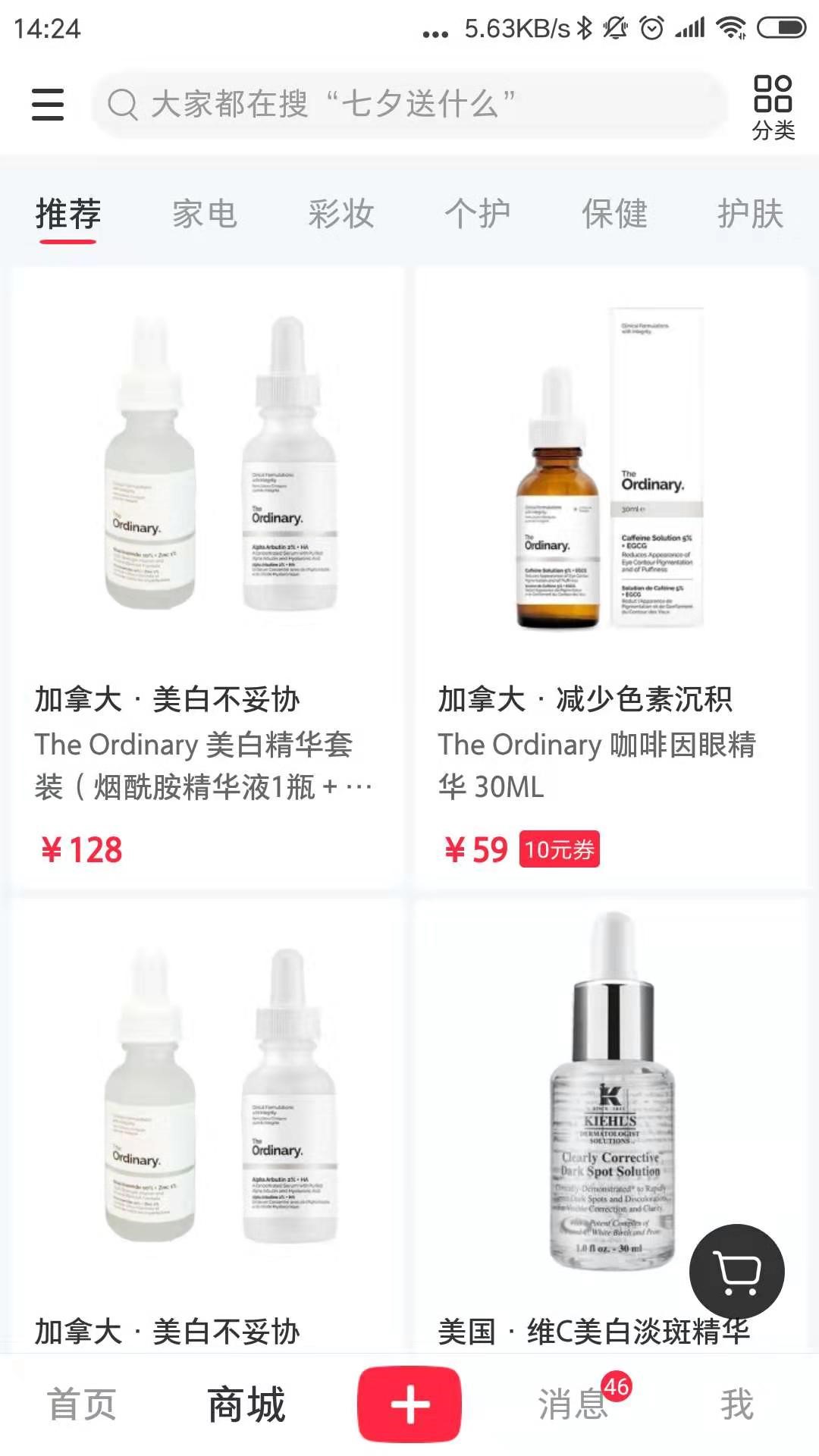Why was Xiaohongshu Pulled from China's App Stores?
Xiaohongshu has been taken off China's app stores. We explain what's going on and what this means for brands.
by Ker Zheng
This week, major media outlets have been reporting that China’s most popular social community app Xiaohongshu was pulled from Android app stores.
This is a major setback for the platform, which has been struggling to monetize its lucrative user base while maintaining the quality of its user-generated content.
Xiaohongshu has over 85 million monthly active users, most of whom are affluent females in China’s Tier 1 & 2 cities.
Its user-generated content community had become a trusted place where users could write about and discover new products or experiences.
We dig deeper and figure out what this means for the platform and brands going forward.

Xiaohongshu has been deleted from Xiaomi's app store (left) and cannot be found on Baidu's app store (right). Source: Xiaomi, Baidu App Store Screenshots
Complaints Against Xiaohongshu Have Risen
Many have speculated that the removal of Xiaohongshu from Android app stores was due to government intervention.
An insider from the Ministry of Industry and Information Technology noted that users and companies have submitted many complaints about the company over the last 1-2 years.
More specifically, the complaints specify that Xiaohongshu facilitates the sale of restricted, forbidden, and fake products. These products include tobacco, e-cig products, and medicinal products such as skin-injection kits.
A quick search revealed that there were over 95,000 articles related to the keywords “smoke”, “tobacco”, “e-cig”, etc., while there were over 480,000 articles related to health care products. Many of these articles have been removed over the last week or so.
While Xiaohongshu’s e-commerce platform does not directly hold such products for sale, authors of posts have solicited users’ private WeChat accounts in the comments section, with the intention of selling products to them offline.
Xiaohongshu has Struggled to Monitor its Content
And yet it’s hard to blame the executives at Xiaohongshu for allowing this to happen. They face the obstacle of monitoring over three billion pieces of content. The sheer volume of content makes it very difficult for a smaller platform to handle.
According to reports released in the second quarter of 2019, its 500-person content audit team deletes an average of 4,285 notes a day. But it’s still not enough.
Many users have complained that the content has become too commercialized and filled with advertised or fake posts, rather than genuine user-generated content.
70% of the content is user-generated, and its product reviews are its main draw. If the platform loses the trust of its user base, then it could risk losing these users for good.

Xiaohongshu’s “nearby” tab lets users discover new restaurants, entertainment spots, and other places. Source: Official Xiaohongshu App
The Road Ahead for Xiaohongshu
This incident is a major issue because Xiaohongshu is under tremendous pressure to monetize its user base, after having raised $3 billion last year.
The platform has struggled to create a strong customer experience for its e-commerce business, and failed to hit its 2018 goal of 10 billion RMB in sales. Customers have complained of fake products and slow shipping, with some merchants failing to fulfill orders altogether. Complaint rates skyrocketed during last year's Singles Day and Black Friday events.
In February the company went through a major restructuring to add more departments for merchandising, logistics, and customer service, but it will be difficult to compete with the likes of Tmall Global and Kaola.
Many believe that it should stick to providing marketing and advertising services, as most users will use the platform for product research but elect to make their purchases on other platforms.

Xiaohongshu’s e-commerce marketplace consists primarily of beauty and cosmetics items. Source: Official Xiaohongshu app
Could KOL Marketing Services be Xiaohongshu’s Savior?
In early 2019 Xiaohongshu launched an official influencer platform, through which brands can sign with pre-approved influencers to promote their products on the platform. Even though 70% of the content is user generated, KOLs and celebrities also post content to sponsor certain brands.
In May, it doubled down on quality control by kicking low-performing KOLs off the platform and raising requirements for new ones. KOLs now must have a certain number of fans and monthly exposure.
And in June Xiaohongshu was rumored to be testing livestreaming features for KOLs. While e-commerce wasn’t part of the picture, platforms such as Taobao and Mogujie have livestreaming communities.
In these livestreaming sessions which users can directly purchase products being presented by hosts. It is very probable that Xiaohongshu intends to turn this into a service it can monetize, as the conversion rates are quite high.

A KOL livestreams herself trying out a beauty device. Source: Tencent News
For brands, this could be a great way to build brand awareness on Xiaohongshu. But this recent incident with the app stores demonstrates that the platform continues to face challenges.
Many are now questioning whether Xiaohongshu will be able to maintain the loyalty of its lucrative user base.
Key Takeaways
1. Xiaohongshu was taken off Android app stores in China, as it has been accused of facilitating the sale of unsafe and fake products
2. It’s hard for Xiaohongshu to monitor its user-generated content, which accounts for 70% of its three billion pieces of content. Many users have complained that the content has become too commercialized, and losing the trust of its user base is a big concern for Xiaohongshu
3. Xiaohongshu faces tremendous pressure to monetize its user base. Providing marketing tools and KOL livestreaming services to brands may be an option, but this recent incident raises concerns over its future.